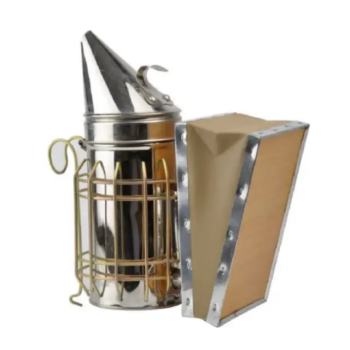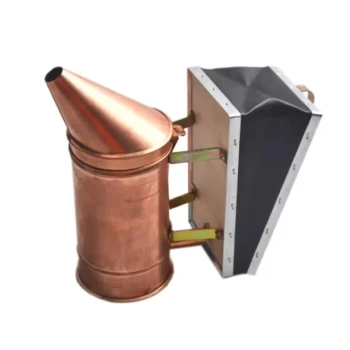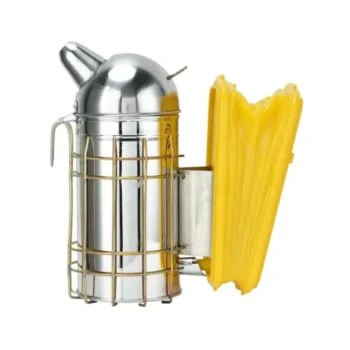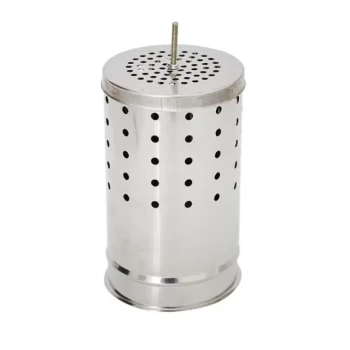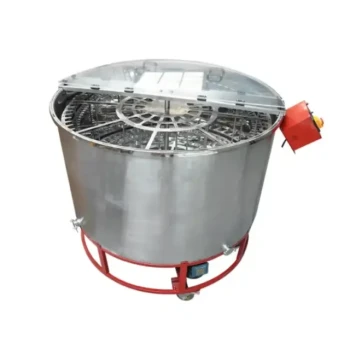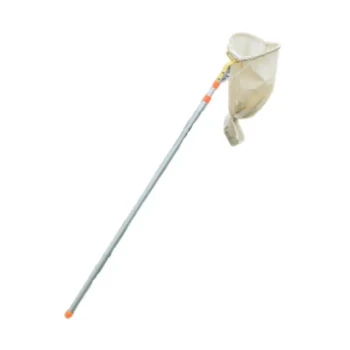To put it simply, you should avoid over-smoking a hive because it causes unnecessary stress, can provoke a defensive reaction instead of a calm one, and risks tainting the honey with a smoky flavor. Excessive smoke overwhelms the bees' senses, turning a tool for gentle misdirection into a source of panic for the colony.
The goal of smoke is not to sedate bees, but to temporarily interrupt their defensive communication. Using the minimum amount required achieves this, while over-smoking creates chaos and undermines the health and productivity of the hive.

How Smoke Actually Works on Bees
To understand why "less is more," you must first understand the two specific biological responses that smoke triggers in honeybees. Your goal is to activate these instincts, not overwhelm them.
Triggering the Gorging Response
Bees associate smoke with a forest fire, a primal threat to their home. Their instinct is to prepare to abandon the hive and find a new location.
To prepare for this journey, they immediately begin to gorge on honey, filling their stomachs with as much energy reserve as they can carry. A bee with a full stomach is physically less able to curl its abdomen to sting and is more preoccupied with eating than with defending the hive.
Masking Alarm Pheromones
When a bee feels threatened or stings, it releases an alarm pheromone that smells like bananas. This chemical signal alerts other bees in the vicinity, triggering a coordinated defensive response.
The particles in cool, white smoke effectively "jam" this signal by binding to the receptors on the bees' antennae. By masking the alarm pheromone, you prevent a single defensive action from escalating into a full-blown colony-wide attack.
The Consequences of Using Too Much Smoke
When you move beyond gentle misdirection and flood the hive with smoke, you create new problems that are often worse than the one you were trying to solve.
Causing Stress and Panic
A small amount of smoke suggests a distant fire, prompting an orderly preparation. A large, dense cloud of smoke signals an immediate, life-threatening emergency.
This causes widespread panic, leading bees to run frantically across the combs rather than settling down. This makes inspections more difficult and places significant stress on the colony.
Hindering All Communication
While blocking alarm pheromones is useful, excessive smoke blocks all chemical communication. This includes the vital queen mandibular pheromone (QMP), which the queen uses to signal her presence and health.
Interrupting these signals creates confusion and disorganization long after your inspection is over.
Risking Tainted Honey
Heavy, sooty smoke can settle into the uncapped nectar and open honey cells. This can impart an undesirable smoky flavor and aroma into the finished honey.
For any beekeeper who plans to harvest and share their honey, this is a critical quality control issue. The best honey is a pure expression of the local floral sources, not the beekeeper's smoker fuel.
Provoking Aggression
While it seems counterintuitive, too much smoke—especially hot, black smoke—can be interpreted by the bees as a direct attack rather than an environmental threat.
This can make them more aggressive and "runny" on the frames, making it impossible to properly inspect the colony's health, find the queen, or check for resources.
A Practical Guide to Using Your Smoker
Your goal is to become a responsive beekeeper who reads the colony and applies smoke with purpose, not as a blunt instrument.
- If your primary focus is a quick, calm inspection: Use the "puff, puff, wait" method. Apply two gentle puffs at the hive entrance, wait 60 seconds, then two gentle puffs under the inner cover before proceeding.
- If your bees are naturally defensive or the weather is poor: Use smoke more deliberately but still gently. A small, continuous stream of cool smoke directed across the top bars can keep alarm pheromones suppressed during a necessary inspection.
- If your goal is to harvest pristine honey: Be extra mindful of using only cool, white smoke from clean fuel (like cotton, burlap, or pine needles) and direct it away from frames of uncapped nectar.
Proper smoke usage is the art of speaking to the bees in a language they understand, turning a potentially stressful encounter into a calm and productive inspection.
Summary Table:
| Consequence of Over-Smoking | Impact on the Hive |
|---|---|
| Causes Stress & Panic | Bees run frantically, making inspections difficult and harming colony health. |
| Hinders Communication | Blocks vital pheromones like the queen's signal, causing long-term disorganization. |
| Risks Tainted Honey | Soot can settle in nectar, giving honey an undesirable smoky flavor. |
| Provokes Aggression | Excess smoke can be seen as an attack, making bees more defensive and harder to manage. |
Master the art of gentle beekeeping with the right tools from HONESTBEE.
Over-smoking your hive can undermine months of careful work, but using high-quality, reliable equipment helps you apply smoke precisely and calmly. At HONESTBEE, we supply commercial apiaries and beekeeping equipment distributors with durable, efficient smokers and accessories designed for professional use.
Let us help you protect your colony's health and your honey's purity. Contact our wholesale team today to explore our range of beekeeping supplies and elevate your operation.
Visual Guide

Related Products
- European Stainless Steel Bee Smoker for Honey Bee Hive
- Stainless Steel Honey Bee Smoker Hive and Honeycomb Smoker for Beekeeping
- Electric Bee Smoker European Style Bee Hive Smoker for Beekeeping
- Heavy Duty Manual Bee Smoker Blower for Beekeeping
- Stainless Steel Electric Beehive Smoker for Beekeeping and Bee Keeper Use
People Also Ask
- What are the key benefits of using a bee smoker? Master Hive Inspections Safely and Efficiently
- What are the benefits of cleaning a bee smoker? Ensure Hive Safety and Bee Health
- What are the differences between stainless steel and galvanized steel bee smokers? Choose the Right Smoker for Your Apiary
- What are the features of a recommended bee smoker? A Guide to Safety, Durability & Performance
- What factors should be considered when choosing a bee smoker? Find the Right Tool for Safe, Effective Hive Management

